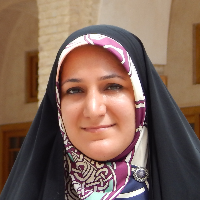Application of the urban village model, a solution in order to achieve Sustainable Rural settlements (Review samples of successful abroad experiences and and Territorial case: Agh Evlar village of Talesh county)
Abstract:
The idea of "Urban Village" as a strategy to achieve sustainability, in settlements with various conditions and with different social and economic incentives, used as a solution for urban and rural sustainable development and its success in many instances has demonstrated its universality. This idea was introduced as a strategy to achieve sustainable development in England. It aims to create an environment with a various functions, self-sufficient, with priority to public transport, walking and, with public spaces and attractive for encouraging local community development and public participation. In this article, we investigated and evaluated the design principles in urban villages through library research. In the experiments with this idea, after the introduction of the overall project and its history, key directions and strategies used in each, particularly of the aspects of architecture and urban design, access and paths, suggested functions, the type of buildings and, and strategies used to promote sustainability and reduce energy consumption were suggested. The sample criteria were based on being comprehensive principles and guidelines presented in each case, was in relation to urban design and architecture and the principles of sustainability. Creating sustainable development of rural settlements with the use of urban village approach, will be a solution to the existing problems and controlling the context of rural development. This research attempted to use the theoretical, explaining the concept of the urban village and urban areas of successful experiences related to the topic of the local conditions in a village case (Agh Evlar Village from Talesh County), to provide suggestions for the development of control strategies and access to the uncoordinated construction of rural settlements. Applying the principles of this approach, to suit the needs of each region and the implementation of local residents were generalized. It can be said that as a fundamental subject, any rural housing policy and planning in the country can be successful if efforts and planning with architectural features of the rural and ethnic traditions, cultural and geographical diversity in different regions of the country is coincident. Moreover, in the housing, neglecting other aspects of the quality of it such as: environmental aspects, health facilities, light, construction technique, visual qualities, local and regional identities, is a main weakness of the rural housing program. Contemplate the local architectural patterns and reliance on local knowledge and facilities can be a good base for design and implementation.
Keywords:
Language:
Persian
Published:
Motaleate Shahri, Volume:1 Issue: 4, 2013
Pages:
23 to 28
magiran.com/p1183407
دانلود و مطالعه متن این مقاله با یکی از روشهای زیر امکان پذیر است:
اشتراک شخصی
با عضویت و پرداخت آنلاین حق اشتراک یکساله به مبلغ 1,390,000ريال میتوانید 70 عنوان مطلب دانلود کنید!
اشتراک سازمانی
به کتابخانه دانشگاه یا محل کار خود پیشنهاد کنید تا اشتراک سازمانی این پایگاه را برای دسترسی نامحدود همه کاربران به متن مطالب تهیه نمایند!
توجه!
- حق عضویت دریافتی صرف حمایت از نشریات عضو و نگهداری، تکمیل و توسعه مگیران میشود.
- پرداخت حق اشتراک و دانلود مقالات اجازه بازنشر آن در سایر رسانههای چاپی و دیجیتال را به کاربر نمیدهد.
In order to view content subscription is required
Personal subscription
Subscribe magiran.com for 70 € euros via PayPal and download 70 articles during a year.
Organization subscription
Please contact us to subscribe your university or library for unlimited access!


